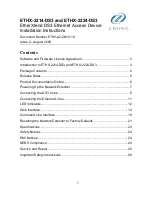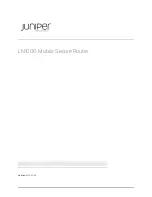
58 - 238
CCNA 2: Routers and Routing Basics v3.1 Instructor Guide – Module 5
Copyright
©
2004, Cisco Systems, Inc.
Discuss the difference between running configuration and startup-configuration. This concept
is very important. Also stress the benefits of comments in the configuration. These comments
can explain the function of the various commands. Make sure that the students know that
these comment lines begin with an exclamation point (!) and that these lines are not stored in
the router.
Some features of HyperTerminal do not work well with the version of HyperTerminal that
comes with Windows XP. A free, educational upgrade to HyperTerminal 6.3 can be
downloaded from the following website.
http://www.hillgrave.com/htpe/index.html
5.2.5 Managing IOS images using TFTP
A router may need to have an IOS upgrade or restored. A router should be backed up upon
arrival. The IOS image can be stored in a central server with other IOS images to restore or
upgrade the IOS into the router and switch. The server should use a TFTP service. The IOS
upgrade can be initiated from the privileged EXEC mode with the command
copy tftp
flash
. The router will prompt the user to enter the IP address of the TFTP server and then
request the filename of the IOS image. If there is not sufficient flash available, the router may
prompt the user to erase flash. Flash will be erased before the new image is downloaded.
Students must realize that it is important to maintain current versions of the IOS to eliminate
security problems and performance bugs. They also should know that the newer releases are
larger and may require flash and RAM upgrades. To ensure a successful transfer, students
can ping the TFTP server from the router to test reachability. Stress that when students enter
a path name or the name of the IOS, the entry must be exact. If it is not exact, the procedure
will not work. One technique is to cut and paste the name of the file from a Windows Explorer
directory listing. Explain that this process takes time since the IOS is several megabytes and
patience is required. Also point out that the letter e appears when flash is being erased and an
exclamation point (!) indicates that a datagram has been successfully downloaded.
5.2.6 Managing IOS images using XModem
If the IOS image in flash has been erased or corrupted, the IOS may need to be restored from
ROM monitor mode (ROMmon). First, the flash should be examined with the
dir flash:
command. If an image appears to be valid, an attempt should be made to boot from that
image. This is done with the
boot flash:
command. If the router boots properly, then the
students should determine why the router booted from the ROMmon prompt instead of flash.
The
show version
command can be used to check the configuration register. Students can
use the
show
startup-config
command to see if there is a
boot system
command that
instructs the router to use the IOS to monitor ROM.
If the router will not boot properly, a new IOS image will need to be downloaded. The IOS file
can be recovered with one of the following methods:
•
Use
xmodem
to restore the image through the console.
•
Use TFTP from the ROMmon mode to download the image.
To restore the image through the console, the local PC needs to have a copy of the IOS file to
restore and a terminal emulation program.
















































